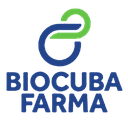Executive Secretary

VIII International Symposium on Chemistry and Pharmaceutical Sciences
SIPN
4th International Symposium "Chemistry of natural products”
Abstract
Problem: Methanolic extracts of the species Zanthoxylum pseudodumosum, Cuban endemic, showed "in vitro" activity against the phytopathogenic fungus Alternaria solani, which affects potato and tomato crops, but its chemical composition is practically unknown.
Objective(s): To carry out a phytochemical study on extracts and essential oil of Z. pseudodumosum, and to evaluate the in vitro antifungal activity of these fractions against Alternaria solani.
Methodology: The extracts and essential oil were obtained by maceration of the leaves and hydrodistillation respectively. The phytochemical study completed qualitative tests, Thin Layer Chromatography and Gas Chromatography coupled with Mass Spectrometry. Four compounds were isolated from the hexane extract using Semipreparative HPLC and two of them were characterized by UV-Vis, IR and NMR techniques. In vitro antifungal activity was evaluated by determining the Minimum Inhibitory Concentration by the broth microdilution method.
Results and discussion: In the phytochemical analysis of the extracts, terpenes, steroids, alkaloids, phenolic compounds and coumarins were identified. In the essential oil, the sesquiterpenes β – Caryophyllene and Germacrene D were identified as major components. Two of the isolated compounds were characterized as furofuran lignans, widely reported in the genus. The best inhibitors of the growth of Alternaria solani were the hexane extract and the essential oil.
Conclusions: The metabolites found in the extracts and the essential oil coincide with those reported in phytochemical studies for species of this genus. The hexanic extract and the essential oil could be valued as natural antifungals for the agroecological control of A. solani.
Resumen
Problemática: Extractos metanólicos de la especie Zanthoxylum pseudodumosum, endémica de Cuba, mostraron actividad “in vitro” frente al hongo fitopatógeno Alternaria solani, que afecta cultivos de papa y tomate, pero su composición química es prácticamente desconocida.
Objetivo(s): Realizar un estudio fitoquímico a extractos y aceite esencial de Z. pseudodumosum, y evaluar la actividad antifúngica in vitro de estas fracciones frente a Alternaria solani.
Metodología: Los extractos y aceite esencial se obtuvieron mediante maceración de las hojas e hidrodestilación respectivamente. El estudio fitoquímico incluyó ensayos cualitativos, Cromatografía de Capa Delgada y Cromatografía de Gases acoplada a Espectrometría de Masas. Del extracto hexánico se aislaron cuatro compuestos empleando HPLC Semipreparativo y dos de ellos se caracterizaron mediante técnicas UV-Vis, IR y RMN. La actividad antifúngica in vitro se evaluó determinando la Concentración Mínima Inhibitoria por el método de microdilución en caldo.
Resultados y discusión: En el análisis fitoquímico de los extractos se identificaron terpenos, esteroides, alcaloides, compuestos fenólicos y cumarinas. En el aceite esencial se identificaron como componentes mayoritarios los sesquiterpenos β – Cariofileno y Germacreno D. Dos de los compuestos aislados se caracterizaron como lignanos furofuránicos, ampliamente reportados en el género. Los mejores inhibidores del crecimiento de Alternaria solani fueron el extracto hexánico y el aceite esencial.
Conclusiones: Los metabolitos encontrados en los extractos y el aceite esencial coinciden con los reportados en estudios fitoquímicos para especies de este género. El extracto hexánico y el aceite esencial pudieran valorarse como antifúngicos naturales para el control agroecológico de A. solani.
About The Speaker

M. Sc. Lisbet Martín Cruz

Profesor Auxiliar a tiempo completo en la Facultad de Química - Farmacia de la UCLV.
Discussion




